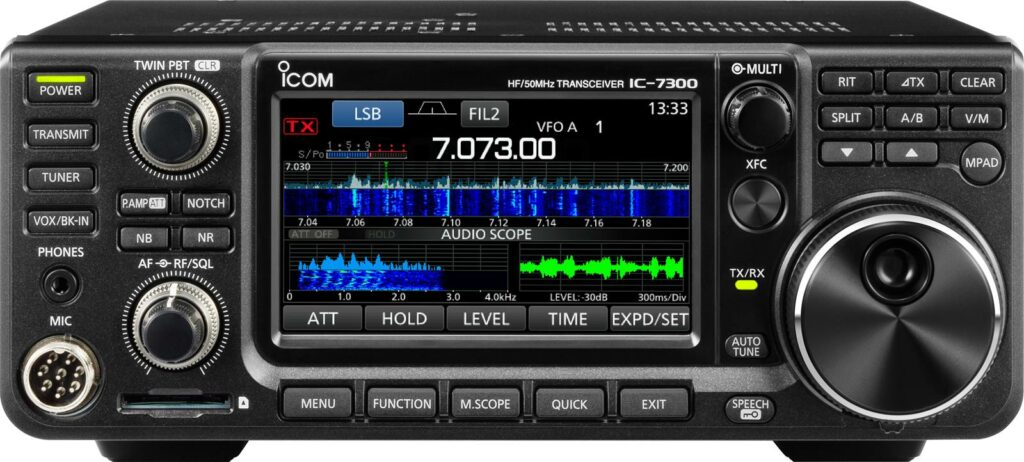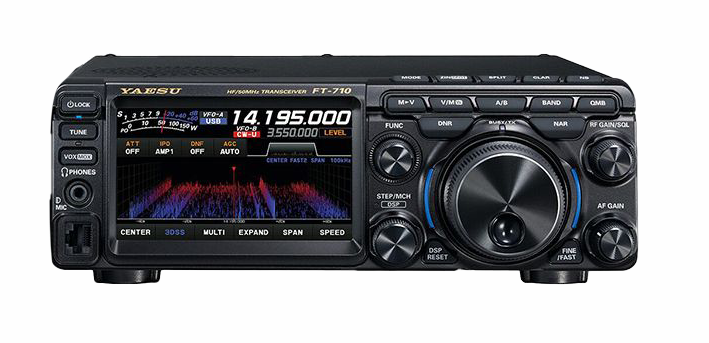How to Choose Your First HF Radio

If you click on the Amazon affiliates links below, we will receive a tiny commission that will help us maintain the website. The products that we list here are the ones we truly believe in and recommend to new ham radio operators.
How to Choose Your First HF Radio: A Guide for Beginners
So, you’ve got your ham radio license, and you’re ready to dive into the exciting world of High Frequency (HF) communication. Congratulations! HF radio opens up a whole new realm of possibilities, allowing you to talk to people across the globe, experiment with antennas, and maybe even make contacts in remote corners of the world. But before you can start making those contacts you need to choose your first HF radio. Those of us at Minnesota Ham Radio are here to help!
Don’t worry—this isn’t as daunting as it sounds. But you should be aware that using HF and that equipment will be a considerable investment to get started.
What to Consider When Choosing Your First HF Radio
Think about your HF radio budget
Let’s start with the obvious: how much are you willing to spend? HF radios can range from a few hundred dollars to thousands. As a new operator, you don’t need the most expensive rig on the market. A more expensive HF radio doesn’t mean you’ll be able to work the most distant stations. They can help a good operator do it — but it still comes down to the operator themselves and most importantly: the antenna. Look for something reputable that fits your budget. Even a $300-$400 HF radio can work around the world with ease.
Features You’ll Actually Use
Modern HF radios come packed with features, but not all of them are essential for beginners. Focus on the basics:
- Built-in antenna tuner (optional but handy to have if you’re using basic dipole antennas that need to have the match cleaned up)
- Digital modes compatibility (FT8, PSK31, Winlink, etc.) some HF radios feature a USB port built right into the radio. If you see yourself interfacing your radio with a PC and exploring digital modes (which are very popular) having a radio with USB is likely worthwhile.
Ease of Use
As a new operator, you want a radio that’s intuitive and easy to operate. Look for a good display and straightforward menu layout. Some radios are designed with beginners in mind, while others cater to seasoned operators (more expensive radios). You can grow into the more expensive models as you learn the ropes on HF. Get hands on with various radios at your local club, hamfests or local ham radio store if you’re fortunate to live near a Ham Radio Outlet location.
Size and Portability
Think about where you’ll be operating. If you plan to set up a permanent station at home, size might not matter much. But if you want to take your radio to the field for portable operations (like Parks on the Air or Summits on the Air), a compact, lightweight rig is a must. Really think if portability is something you’d like in a radio.
Future-Proofing
While you don’t need all the bells and whistles right now, it’s worth considering whether the radio can grow with you. For example, if you think you might get into digital modes or contesting later, choose a radio that supports those activities when you buy your first radio. That just means one less purchase down the road as you expand your ham radio horizons. Buy once. Cry once!
Popular HF Radios for Beginners
Here are some of the most popular HF radios on the market today, perfect for new operators:
Yaesu FT-891

Price: $630
Why It’s Great: This compact, 100-watt radio is perfect for portable operations. It’s lightweight, affordable, and packed with features like a built-in antenna tuner and digital mode compatibility for running FT8, Winlink and more.
Best For: New hams who want a portable rig that’s easy to take in the field from a reputable brand.
Find the Yaesu FT-891 on Amazon
Icom 7300

Price: Between $900-$1,100 depending on discounts
Why It’s Great: The 100-watt IC-7300 is a favorite among hams for its intuitive touchscreen interface, built-in antenna tuner, and excellent true SDR receiver performance. It’s also great for digital modes thanks to its built-in USB port. Has a large waterfall for visualizing RF signals.
Best For: Hams who want a feature-rich SDR radio for home or portable use that they can grow into but still easy to use as a beginner (though it’s not the easiest to take portable given its size, but it’s doable)
Find the Icom 7300 on Amazon
Xiegu G90

Price: Around $450
Why It’s Great: We generally don’t recommend Chinese radios for new hams, but this Chinese-made radio is a budget-friendly option with surprising capabilities. It has a built-in antenna tuner that is known to be very capable of tuning just about anything, a small display that gives you an SDR band scope, and 20 watts of output power (enough for most HF contacts).
Best For: Hams on a tight budget or those looking for a portable rig to take in the field.
Yaesu FT-710

Price: Around $1,000
Why It’s Great: Known for its excellent receiver and digital noise reduction. This is Yaesu’s competitor to the Icom 7300 and includes a 100-watt transmitter and USB functionality. It’s great for home use and portable use in the field. Has a large waterfall for visualizing RF signals.
Best For: Hams who want a durable, high-quality radio for home or portable use in the field. Hams who want a quality SDR radio
Find the Yaesu FT-710 on Amazon
Final Tips for Making Your Decision
- Try Before You Buy: If possible, visit a local ham radio club meeting, ham meetup or store to see the radios in person. Getting your hands on the controls can help you decide which one feels right.
- Read Reviews: Check out online reviews and forums like eHam.net to see what other hams are saying about the radios you’re considering. There is a lot of value in the hundreds of reviews you can find on eHam.
- Think Long-Term: Your first HF radio doesn’t have to be your last. Many hams start with a basic rig and upgrade later as their interests evolve and they learn what type of operating really interests them.
Choosing your first HF radio is an exciting step in your ham radio journey. Take your time, do your research, and don’t be afraid to ask for advice from fellow hams. You’ll get varied opinions from hams, but it’s still great to hear from others. Remember, the best radio is the one that gets you on the air and having fun!






